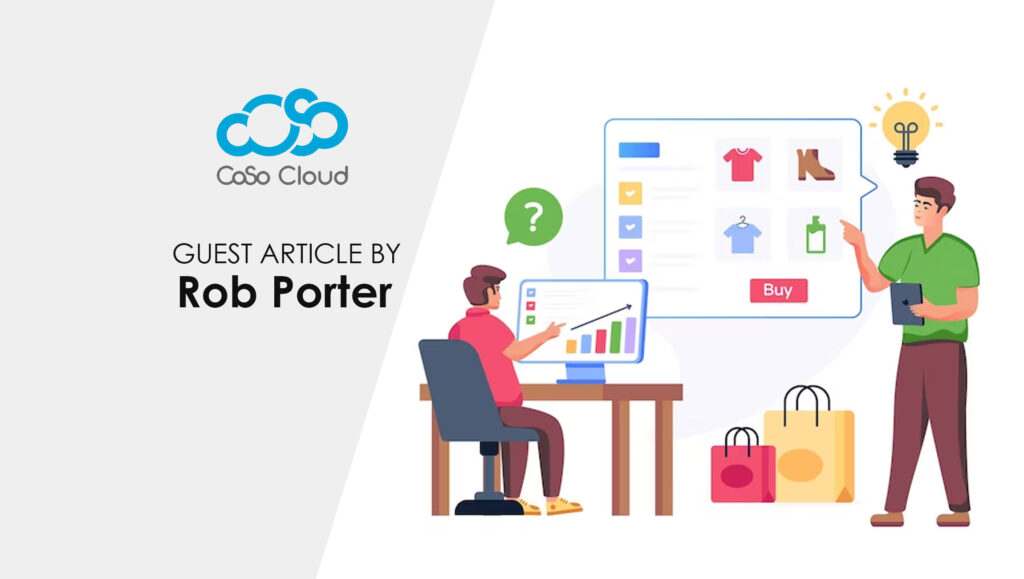IBM published a report recently that found that for three-quarters of the US, brick-and-mortar stores are still important. This may come as a surprise as the retail landscape appears to have changed so much since 2020, with online and hybrid shopping reaching new levels of acceptance by consumers. Reports surfacing of iconic shopping districts like San Francisco’s Union Square losing tenants en masse give the impression that we’re just not buying products at stores anymore.
While we may be buying more items online, there are pockets of the retail landscape in which consumers would still prefer to buy from an expert store salesperson than from an online store. One of these pockets of products is installed, big-ticket components with diverse and customized applications in complex markets. In other words, areas where online research is no match for talking to an expert, and the cost of making the wrong purchase is high.
This category includes items such as high-end tools, specialty appliances and building supplies, and special-purpose computing components. These items require more consultation than an online shopping cart can provide.
With the ongoing need for in-person expertise for the sale of specific products, it’s in the best interest of original equipment manufacturers (OEM)s to equip the people selling their products—whether they work for the OEM or a third-party retailer—with the absolute best training possible in their products and the product landscape.
Bridging the training gap
In the past, the labor market and economy allowed expert career professionals to make a living in retail sales of complex, high-stakes products. For example, auto parts store clerks were often retired mechanics. As the labor market has shifted, retail sales roles—even of complex products—are now more often entry-level and/or temporary non-career positions, leaving a huge expertise gap.
While in-person sales expertise is not being usurped by online shopping, it’s online-delivered learning resources and eLearning that can solve the gap in training and expertise—but doing this kind of eLearning right can be a challenge.
Professional expertise for lay people
Imbuing the average retail sales rep with the kind of expert knowledge that only comes from decades of industry experience isn’t easy. In the 3D graphics space we discussed earlier, the major graphics processor OEM, NVIDIA, is doing it better than most with a custom headless learning management system (LMS) that allows for powerful features that make engagement with retailers natural.
In the past, NVIDIA relied on detailed technical manuals as its primary training documentation. These documents were designed for professional engineers’ consumption, not retail sales staff. Most of us have had the experience of forcing our brains to process dense technical information outside our area of expertise—this process may be referred to as “high-friction” due to the effort required to digest all the pertinent information.
NVIDIA realized that forcing retailers to adapt to existing complex technical materials would lead to unsatisfactory outcomes for everyone involved. Retailers and the OEM would make fewer sales, and customers would miss out on access to highly knowledgeable salespeople. Instead of requiring the audience to adapt to the training materials, NVIDIA created new training programs adapted to the audience.
Headless is key
The “Headless” architecture used in NVIDIA’s new LMS for training retail staff allows for a fully immersive NVIDIA-branded learning environment to be built upon a powerful, industry-standard LMS platform (in this case, Adobe Learning Manager). While the underlying training content delivers much of the same information the old training manuals did, the uniquely NVIDIA environment allows for functionality like promotions, activities, and gamification, allowing learners to compete with other learners globally and see how they compare.
NVIDIA’s training environment allows learners to create and customize personal learning paths, engaging with modules that reflect their interests. Retail reps may also view YouTube live streams of demonstrations and update information. One of the hopes for these features is that access to high-level products. Market knowledge will inspire more retail staff to forge their jobs into careers in the electronics and computing industries, turning the traditional model of retail product expertise on its head: Rather than coming to retail roles with expert knowledge, retail roles will be one starting point for acquiring that knowledge.
Read More: Three Ways Technology Is Helping Retailers Weather Rough Economic Waters
The path of least resistance
NVIDIA recognized that reducing friction in education and delivering an exciting learning experience would generate productive retail outcomes. NVIDIA’s training platform has allowed retailers to provide customers with the deep expertise they seek for high-cost items with complex and diverse applications. This training approach provides an effortless path for retailers, allowing them to offer customers easy access to expert advice—a highly sought-after convenience.
With the technology of the Headless LMS and gamification features, community building, and individual learning paths, companies like NVIDIA can capture the power of play and games to deliver serious retail product training that changes careers, labor markets, and corporate fortunes.





















